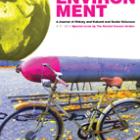Radkau, Joachim. “GAU: Nuclear Reactors and the ‘Maximum Credible Accident’.” Global Environment 11 (2013): 42–57. Republished by the Environment & Society Portal, Multimedia Library. http://www.environmentandsociety.org/node/7586.
This essay traces the history of the nuclear risk discourse and policy in West Germany from the first use of the term GAU in the 1960s to the present. A close examination of the term reveals that it is in fact ambiguous, oscillating between support of nuclear energy and criticism of it. GAU, which stands for “größter anzunehmender Unfall”, is a translation of the English “maximum credible accident”, the greatest possible accident that was conceivable under realistic conditions and one that reactors were supposedly designed to be able to withstand. However, from the beginning it was a fictional construct used by the nuclear industry to receive permission for building; it was not the result of either safety-related experiments or theoretical discussions by the experts. Over time the word underwent a shift in meaning and was used by the anti-nuclear community to refer to a worst-case scenario—an accident that could no longer be controlled. This change in meaning reflects a hidden “revolution” within the community of American and West German reactor safety experts during the 1960s who challenged the validity of the concept.
— Text from The White Horse Press website
All rights reserved. Made available on the Environment & Society Portal for nonprofit educational purposes only, courtesy of Joachim Radkau and XL edizioni.


